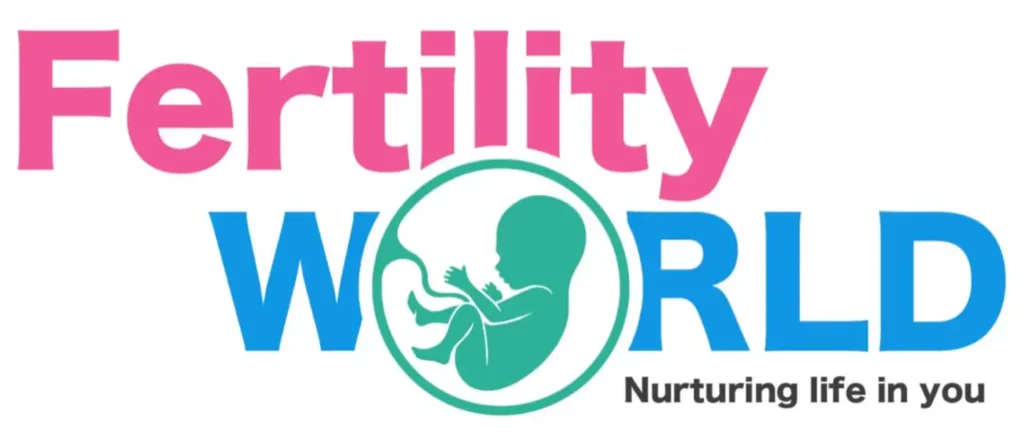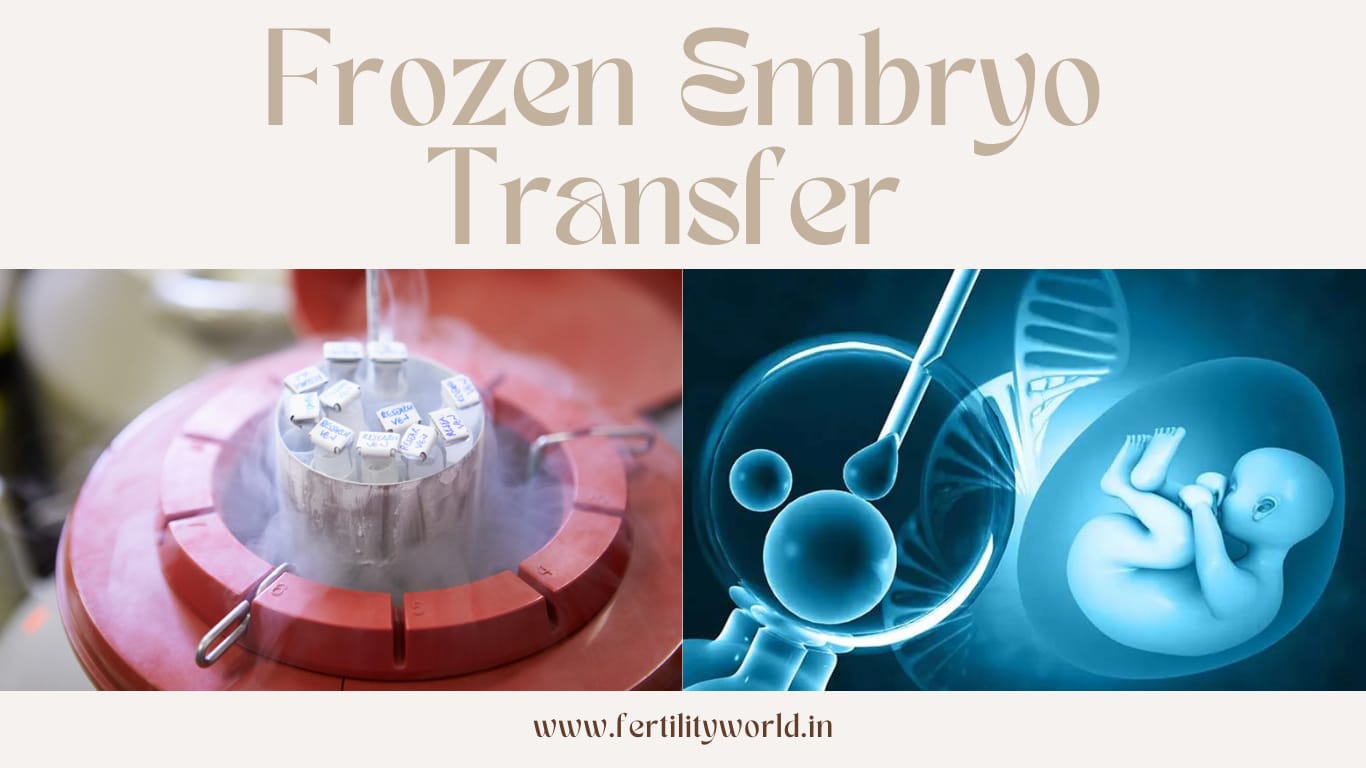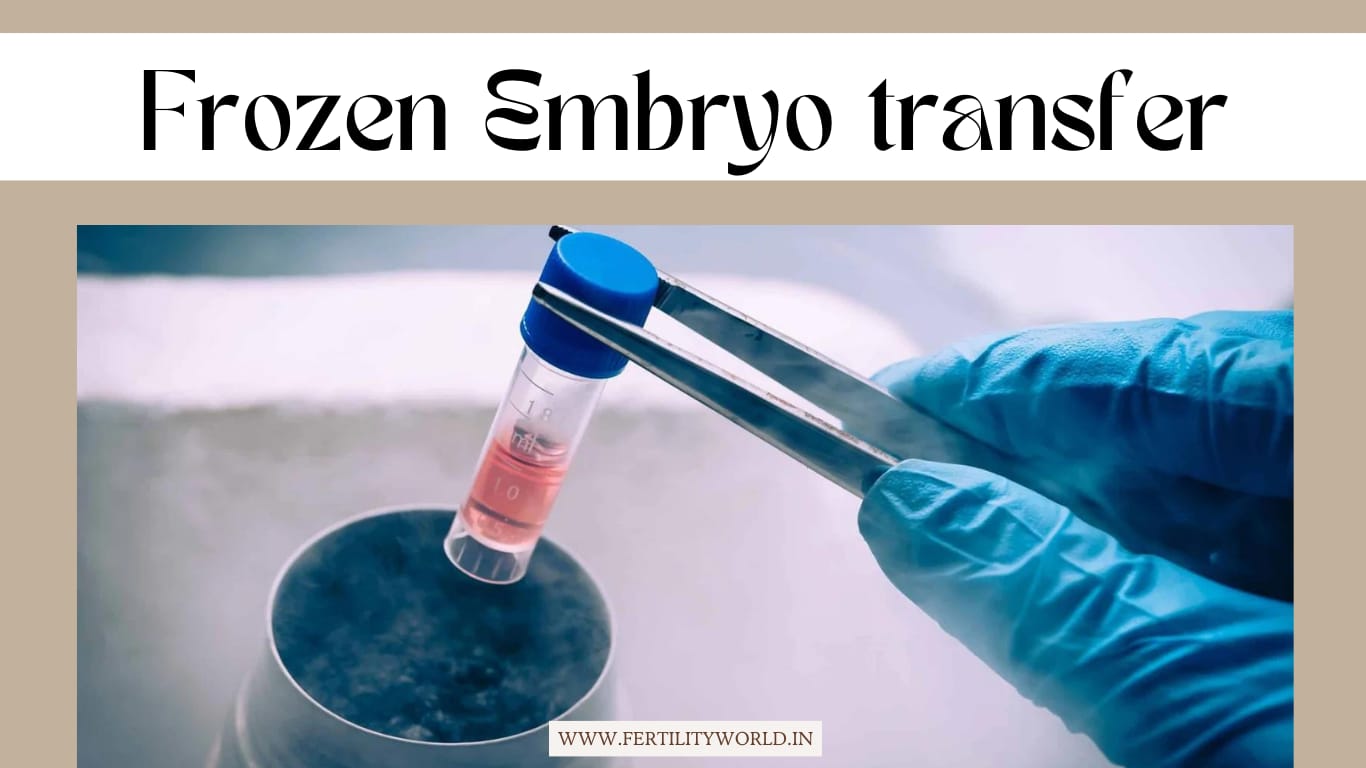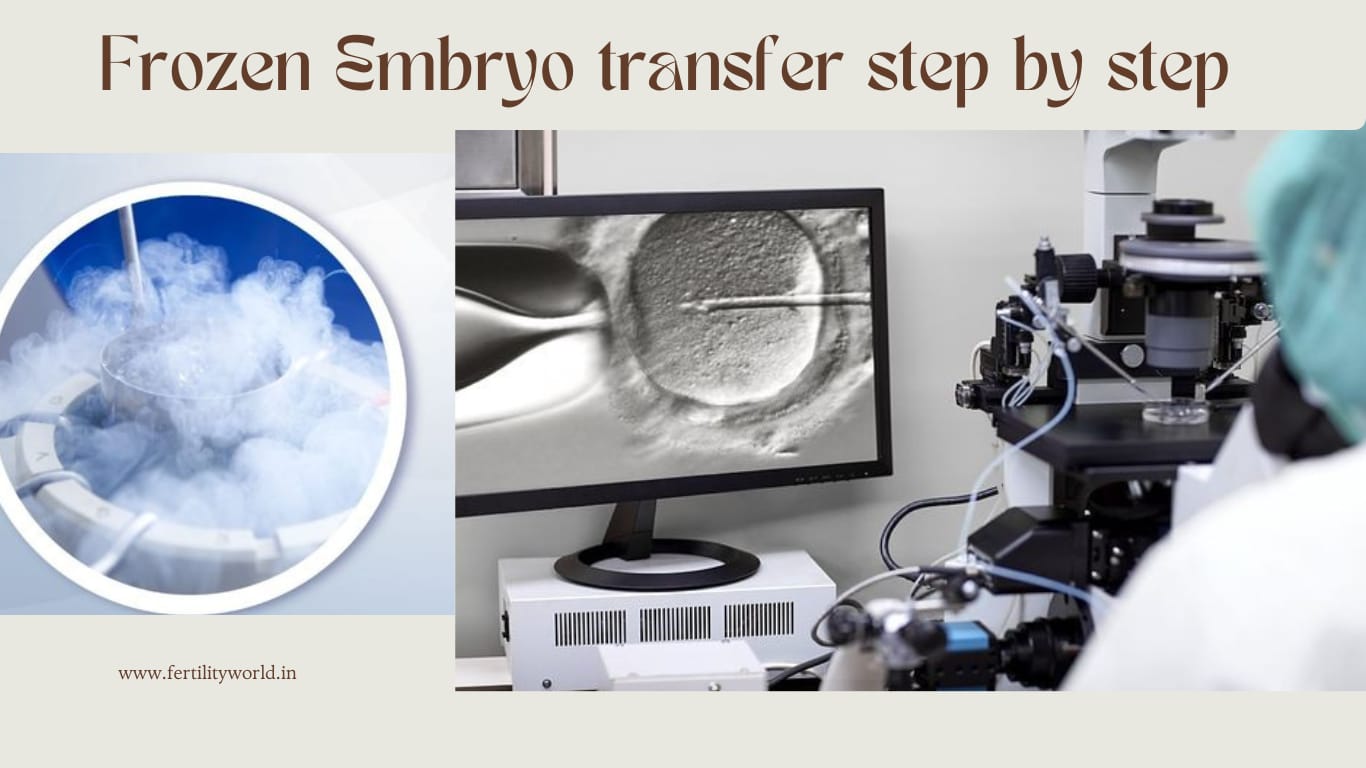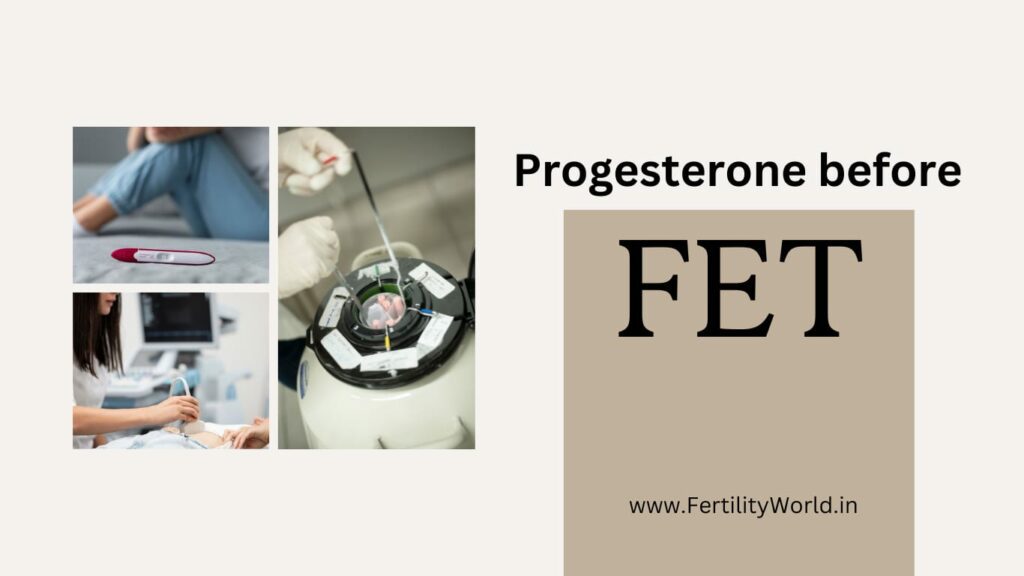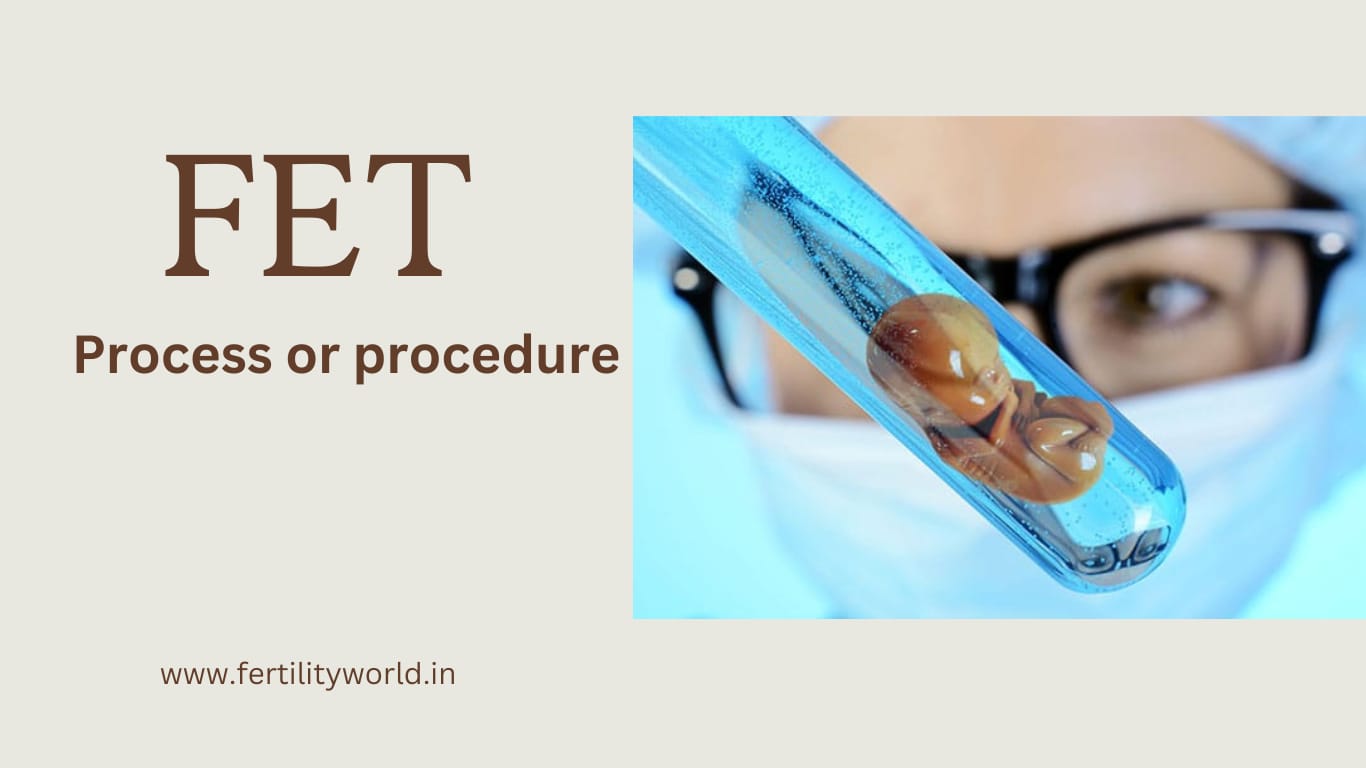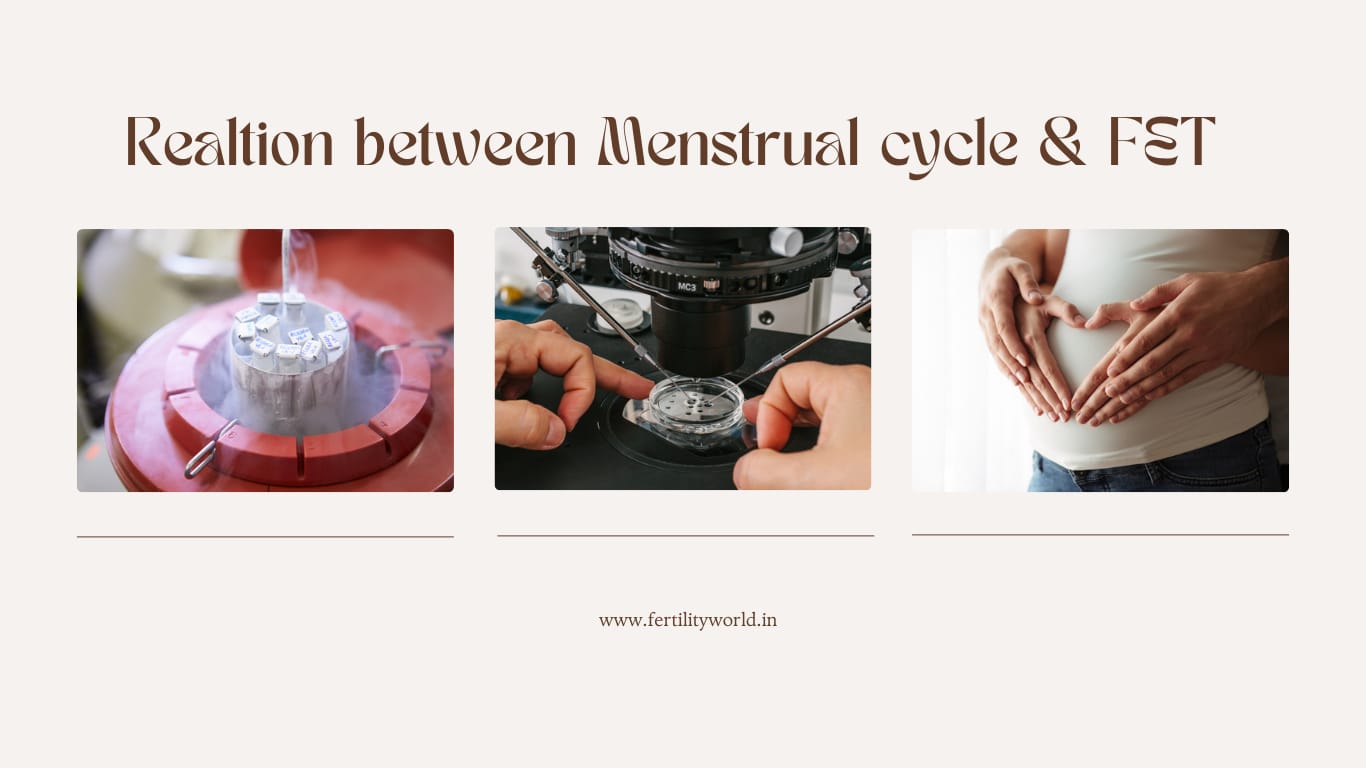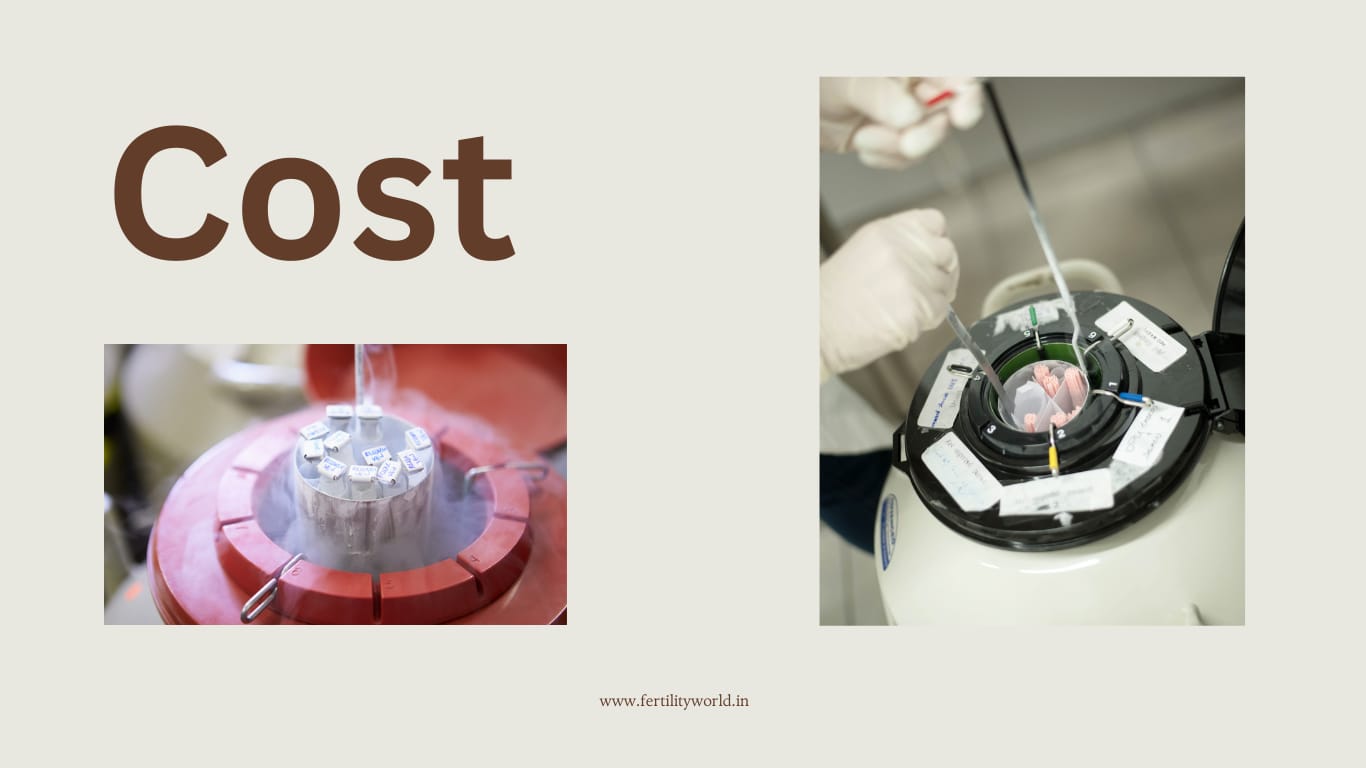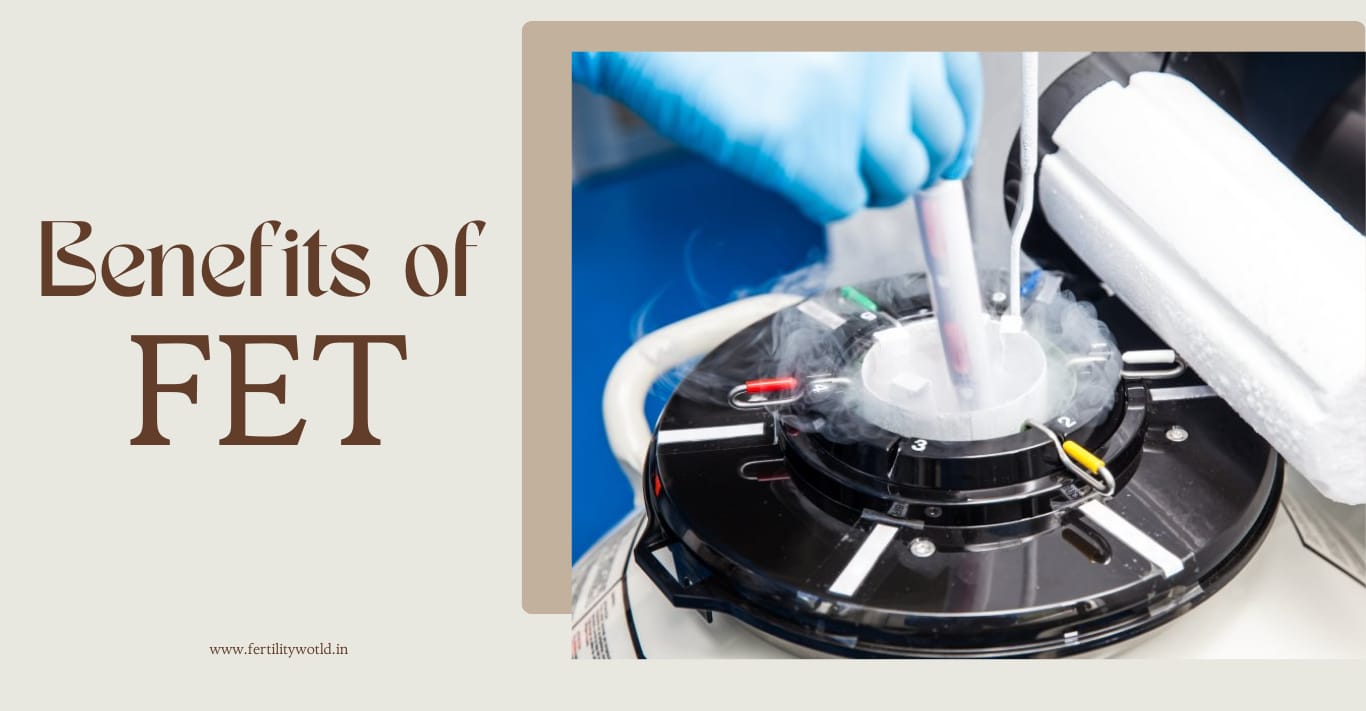Frozen embryo transfer (FET) is a facilitated, advanced IVF procedure. FET creates a shorter timeline of parenthood pathways than the time taken in a normal IVF cycle. The patient can preserve their embryos using cryopreservation technology for over 10 years and opt for IVF treatment when they are ready to experience parenthood through FET. The fertilityworld fertility clinic has specialized in embryo freezing technology and FET for decades.
- Book an online appointment: Get a free fertility consultation.
- Call/W:+91 9311850412 Email:info@fertilityworld.in
What is frozen embryo transfer (FET)?
When patients use their years-preserved embryos in the IVF cycle, it is known as frozen embryo transfer (FET). Usually, the patients come to the fertility clinic and give their egg and sperm samples. Then, the embryologist, through IVF technology, combines them under the medium in the laboratory and generates the embryos. The fertilityworld considered the 5-day embryo (blastocyst stage- 4 to 8 cells) the best cycle to preserve as it yields an excellent FET success rate. On the patient’s recommendation, the embryos are preserved using cryopreservation technology for up to 15 years. Whenever patients feel ready to experience parenthood, they use this embryo for transfer. Patients can also approach the clinic and use the frozen embryo donor assistance for FET.
On which day of the cycle is frozen embryo transfer (FET) done?
The procedure of Frozen embryo transfer (FET) is done right after the end of the menstrual cycle. Right after your period, a hormonal medicine, usually a GnRH agonist, is prescribed to suppress the female natural ovulation process. During the next menstrual cycle, a blood test is done to confirm a positive response to medication. When the right condition is confirmed, a supplementation like estrogen is given for 2 weeks, which helps to create a healthy endometrium along with regular monitoring. Again, progesterone support is added after estrogen supplementation. The exact procedure of the FET cycle begins once the progesterone support starts. The fertilityworld considers a day 3 or day 5 developed frozen embryo (blastocyst stage) as the finest cycle for the frozen embryo transfer (FET) because the highest success rate is seen in this developed embryo cycle.
Frozen Embryo Transfer (FET) step by step
The simple and most efficient Frozen Embryo Transfer (FET) step-by-step are:
- Hormonal medication
Immediately after the end of your period, a hormonal medicine, usually a GnRH agonist, is prescribed to suppress the female natural ovulation process.
- Estrogen supplementation
If the hormonal medication is conditionally responded to. In the next immediate menstrual cycle, estrogen supplementation is provided for 14 days, usually one pill twice a day with regular monitoring to create a healthy endometrial lining.
- Administration of additional progesterone support
After 14 days of estrogen supplementation, progesterone support is provided either vaginally or through intramuscular injection and continues until the day of the pregnancy test, depending upon the individual physician’s protocol.
- Frozen embryo transfer (FET) procedure
After the 3rd day of progesterone support, an embryologist performs the FET procedure by selecting the best surviving frozen embryo and thawing process. From there, either 1 or 2 embryos are placed in the uterine cavity (endometrium) using a catheter under ultrasound guidance in the hope of achieving fertilization. However, this number is flexible, and your physician will discuss this issue with you.
Frozen Embryo Transfer (FET) Success Rate
The highest frozen embryo transfer (FET) success rate is between 75% to 85% and can rise to 95% when the age of the egg falls between 21 and 35 years (female) during embryo freezing. The periods of freezing do not add to the years of the embryo because its functions are inhibited by freezing. The medication’s good response also enhances the success rate, and the best embryologist performs FET. FET in IVF has a good chance of getting pregnant with a healthy baby, whereas a fresh embryo transfer has only one chance to get pregnant.
When Is Frozen Embryo Transfer Done After a Period?
Is this question boggling you—when is frozen embryo transfer done after your period? You’re not the only one; this is the most frequently asked question among all FET-seeking couples. Well! The type of FET cycle your doctor suggests will determine the answer—reach out to Fertilityworld specialists. The timing is easier than it sounds. We have simplified it for your better understanding; read below:
1. Natural Cycle FET: Transfer Usually Takes Place Between Days 19 and 21
Based on how often you have periods and how often you ovulate, your doctor will follow your body’s normal rhythm. Because it uses your body’s own hormones, this method feels more normal.
The flow goes like this:
- Day 1: Your period begins
- Day 10–12: Blood tests and an ultrasound to check for ovulation
- The day of ovulation is usually Day 14.
- FET: 5 days after ovulation, usually between Days 19 and 21
2. Medicated (hormone-controlled) FET: This is usually done between days 18 and 22.
If your periods don’t come on time or you’d rather have a regular plan, our doctors will use estrogen and progesterone to get your uterine lining ready.
- Day 1: You start having periods
- Day 1 through 14: Estrogen makes the lining rise.
- Progesterone starts on day 15
- FET: After 5 days of progesterone, usually between Days 19 and 21
Your respective doctor has full control over the time of this cycle, which makes it easier to plan.
3. Why timing is important
The baby is moved into your uterus when the lining is thick and soft and hormones are in sync. One day off can mean missing the pregnancy window. This is why doctors watch:
- Lining width (7–9 mm is best)
- Estrogen and progesterone levels
- When to ovulate (in natural cycles)
4. What You Need to Do to Find Out Your Exact FET Day
The FET plan and body of each woman are unique. When it happens exactly depends on:
- No matter if the egg transfer is on day 3 or day 5,
- Cycle of nature vs. medicine
- What your lining grows
- Your cycle of ovulation
So that your baby has the best chance of implanting, doctors carefully plan the day of your transfer.
How many days of progesterone before frozen embryo transfer (FET)?
Progesterone is given for 3 days when the day 3 embryo is to be transferred and 5 days when the frozen embryo is on day 5 (blastocyst) before the frozen embryo transfer (FET) procedure, and continues for about 12 days after embryo transfer until the pregnancy test. If the pregnancy is positive, progesterone may be continued for several weeks following the individual physician’s protocol.
Frozen embryo transfer (FET) process and procedure?
While beginning the FET, there are some processes to be done, starting from consultation, pre-screening, fertility evaluation of periodical cycles or ovulation cycles, and endometrial biopsy. If the patient has risk factors for uterine structural abnormalities, uterine cavity evaluation is done before FET. After ensuring fertility conditions, the actual FET procedures start at the end of the menstrual period with hormonal supplementation and then transfer the embryos into the endometrial receptivity to achieve pregnancy. A small plastic catheter is passed gently through the cervix into the uterus. After waiting for 1-2 minutes to allow any mild cramping to resolve, the embryos are deposited into the cavity along with a small amount of fluid. You will be discharged after resting for 20 minutes. No anesthesia is required for the embryo transfer procedure.
How long does frozen embryo transfer (FET) take?
The overall FET procedure takes about 6 to 8 weeks, beginning with ovulation-suppressing or reduced ovarian activity medication at the end of the menstrual cycle, hormonal supplementation in the next immediate menstrual cycle for endometrial preparation, regular monitoring with blood work and ultrasound, followed by progesterone support supplementation, and the FET procedure following IVF transfer techniques till pregnancy confirmation tests.
The relation between the menstrual cycle and FET cycle timing
In a month, a woman undergoes 4 phases of the menstrual cycle, namely:
- Menstrual Phase (Days 1-5 of the month), signified by bleeding in the uterine lining.
- Follicular Phase (Days 1-13 of the month). In this phase, the ovaries prepare to release an egg with normal hormonal stimulation.
- Ovulation Phase (Day 14 of the month): A mature egg is released from the ovary, the prime time for conception.
- Luteal Phase (days 15-28 of the month), the body produces progesterone to prepare the uterine lining for pregnancy.
Frozen embryo transfer (FET) cost
The cost of frozen embryo transfer (FET) ranges from Rs. 50,000 to Rs. 90,000, inclusive of pre-fertility screening, evaluation, and treatment of any infertility issues, and the FET procedure, including medications, required labs, ultrasounds, embryo thaw, and embryo transfer in the package price. In India, the fertilityworld World Clinic offers the FET at a more reasonable price than others, with excellent success rates. When compared, FET is cheaper than IVF. The FET cost is much higher in Western countries than in Asian countries, and India offers the lowest FET package worldwide. For these many reasons, many International patients traveled to India to meet their parenthood dreams not only in FET but through various infertility treatments.
What are the benefits of Frozen embryo transfer (FET)?
- Achieve pregnancy at your convenient time.
- Able to decide how many embryos are to be transferred into the uterus, single or twins.
- Creates parenthood within a shorter period than the IVF procedure.
- Achieve an ensured success rate.
What are the good signs after embryo transfer?
The following signs or reactions can depict a successful frozen embryo transfer: Spotting, cramping, sore breasts, tiredness, nausea, bloating, discharge, and increased urination.
Conclusion
Frozen embryo transfer (FET) opens a wide window for those patients or couples looking for delayed pregnancy, overage, or cancer patients (freezing embryos before cancer therapy. FET is an advanced fertility treatment option to embrace parenthood in the plan. FET technology is quite simple and highly efficient, and mostly, it is lower in cost than other fertility treatments. FET may fail when your approach falls into the wrong hands. The fertilityworld is the finest fertility clinic running for over 25 years and is highly specialized in FET and embryo cryopreservation with a comfortable package. You can freely contact the clinic’s finest specialist and get a free consultation.
